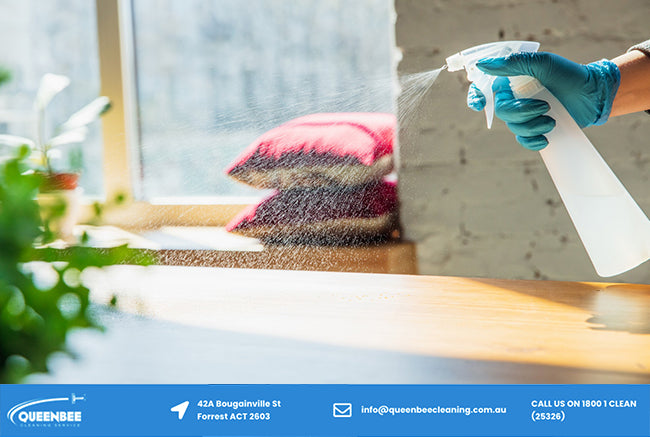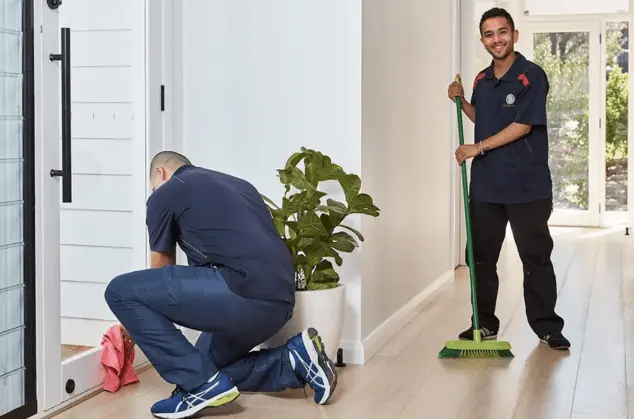Reliable Everyday Cleaning Methods: Best Practices for Defrosted and Cleaned Every Few Months
Reliable Everyday Cleaning Methods: Best Practices for Defrosted and Cleaned Every Few Months
Blog Article
Understanding the Demand for Thoroughly Sanitizing and Disinfecting Frequently Touched Surface Areas in High-Traffic Areas
In the realm of public health and safety, the careful sanitation and sanitization of often touched surface areas in high-traffic locations stand as critical measures in stopping the spread of unsafe virus. By exploring the numerous aspects of surface area disinfection, from the risks linked with ignoring cleaning methods to the reliable methods that can be utilized, a more clear understanding emerges of the vital function these methods play in guarding public wellness.
Relevance of Surface Area Sanitation
Highlighting the complete disinfection of high-traffic surface areas is crucial in keeping a hygienic atmosphere and preventing the spread of dangerous virus. High-touch surfaces such as door handles, light switches, elevator switches, and counter tops function as reproducing grounds for infections and germs. Regular disinfection of these surface areas is necessary to minimize the danger of contamination and transmission of ailments.
By executing a durable disinfection procedure, companies and establishments can create a safer setting for visitors, staff members, and consumers. Appropriate surface area sanitation not only reduces the spread of contagious diseases yet also instills confidence in the tidiness and security of the premises. This positive technique shows a dedication to wellness and wellness, which is specifically crucial in high-traffic locations where the likelihood of exposure to microorganisms is enhanced.
Moreover, surface sanitation plays a vital duty in general infection control approaches. Incorporated with hand health methods, using masks, and preserving physical distancing, complete sanitation of high-touch surface areas develops an extensive defense versus the transmission of unsafe microorganisms. Focusing on surface area disinfection is a crucial component of an alternative method to health and wellness in shared rooms.
Threats of Disregarding Cleansing Practices
Neglecting extensive disinfection of high-traffic surface areas dramatically enhances the danger of viral and microbial contamination, posturing a severe danger to the health and safety and security of individuals often visiting these areas. Failure to implement correct cleansing methods can lead to the buildup and spread of dangerous pathogens, including bacteria and infections, on frequently touched surface areas such as doorknobs, handrails, lift switches, and counter tops.

Moreover, overlooking the significance of comprehensive cleansing not only jeopardizes the wellness of individuals but also weakens initiatives to preserve a clean and sanitary environment. It is vital to acknowledge the value of appropriate sanitation protocols in protecting against the spread of infections and protecting public wellness.
Effective Sanitation Approaches
To preserve optimum tidiness and reduce the danger of contamination on high-traffic surface areas, employing efficient sanitation approaches is crucial. One of the most efficient and usual disinfection techniques is utilizing chemical anti-bacterials. These items can vary in toughness and composition, with some targeting certain virus like viruses or bacteria. It is important to adhere to the supplier's instructions for proper dilution, get in touch with time, and air flow when using chemical disinfectants to ensure their efficiency - defrosted and cleaned every few months.
An additional reliable approach is the use of UV-C light. UV-C light has actually been shown to be efficient in eliminating a wide range of bacteria by disrupting their DNA structure, hence stopping them from reproducing. Nevertheless, it is important to use UV-C light properly, making sure that the appropriate intensity and direct exposure time are related to accomplish the preferred sanitation outcomes.
Furthermore, using steam cleansing as a disinfection technique can be highly effective, especially on surface areas that are heat-resistant. Vapor can penetrate porous surface areas and eliminate germs, infections, and other virus successfully. When making use of heavy steam cleansing, it is essential to make certain that the surface gets to the required temperature level for an enough amount of time to ensure correct disinfection.
Influence On Public Health
The upkeep of high criteria of sanitation and sanitation on high-traffic surface areas plays an essential role in protecting public health and wellness. Often touched surfaces in locations with high footfall, such as doorknobs, hand rails, lift switches, and bathroom centers, serve as breeding premises for harmful pathogens.
Reliable hygiene techniques not just protect people from dropping sick however also add to the overall well-being of culture. Public wellness authorities highlight the value of maintaining clean environments to avoid episodes and consist of the spread of health problems. In high-traffic areas like airports, schools, hospitals, and mass transit systems, the influence of extensive disinfection procedures can not be downplayed. Prioritizing the sanitization of regularly touched surfaces is an aggressive technique to promoting public health and boosting the safety of people in shared spaces.
Carrying Out Regular Cleaning Methods
Quickly setting up and adhering to a regular schedule of cleansing protocols is vital for keeping the tidiness and safety of high-traffic surface areas. Normal cleaning procedures are crucial in stopping the accumulation of bacteria and microorganisms on regularly touched surfaces, particularly in locations with high foot website traffic. By carrying out a systematic method to cleansing, companies can effectively decrease the danger of condition transmission and develop a healthier environment for workers, clients, and the general public.
To establish an efficient cleaning routine, it is critical to identify high-traffic areas that need frequent attention. These areas may include doorknobs, handrails, elevator switches, toilet centers, and common tools. Implementing a routine cleansing regimen that targets these surfaces multiple times a day can considerably minimize the spread of dangerous germs and infections.
Moreover, utilizing appropriate cleaning representatives and anti-bacterials is vital to ensuring that surfaces are extensively disinfected. Normal training of cleansing staff on appropriate cleaning techniques and the importance of adherence to the cleaning timetable is additionally important in preserving a hygienic environment. By focusing on constant cleaning methods, companies can advertise the health and wellness and wellness of individuals that engage with these high-traffic surfaces.

Final Thought
In verdict, it is vital to prioritize comprehensive sanitation and sanitization of often touched surfaces in high-traffic locations to avoid the spread of hazardous virus and preserve public health. It is imperative to acknowledge the significance of keeping clean surface areas in high-traffic areas to ensure the health of the neighborhood.
In the world of public health and wellness and safety, the careful disinfection and sanitization of regularly touched surface areas in high-traffic locations stand as paramount steps in stopping the spread of unsafe microorganisms. By checking out the various elements of surface sanitation, from the risks connected with neglecting cleansing protocols to the efficient approaches that can be employed, a clearer understanding arises of the crucial function these methods play in securing public health.Additionally, utilizing vapor cleaning as a sanitation approach can be highly efficient, specifically on surfaces that are heat-resistant. When utilizing vapor cleaning, it is essential to make certain that the surface area reaches the needed temperature for defrosted and cleaned every few months a sufficient amount of time to ensure correct sanitation.
In conclusion, it is important to focus on thorough disinfection and sanitization of often touched surfaces in high-traffic areas to protect against the spread of damaging virus and maintain public health.
Report this page